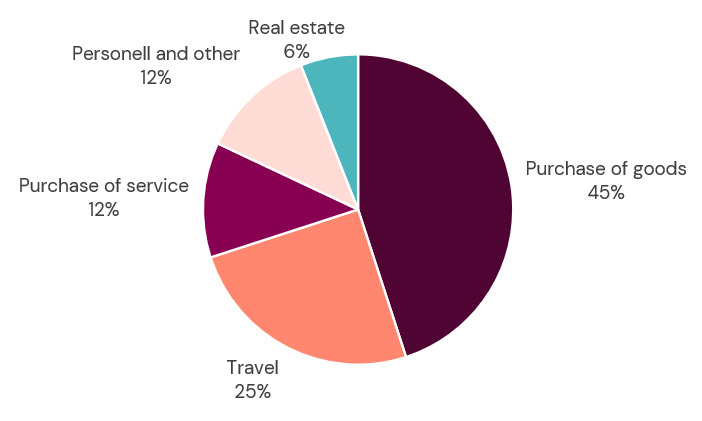Carbon mapping
In order to get an overall picture of KI's emissions of greenhouse gases, a climate mapping has been carried out. The result indicates which areas we should focus on in order to have the greatest potential to reduce KI's emissions. The calculations are based on a environmental spending analysis, which means that it is based on purchases. The results are an indication of climate impact.
Aim to reduce emissions
Together with a large number of other universities, KI has signed the Climate Framework, which aims to increase the climate action of our society. KI is committed to conduct climate work that is in line with the Paris Agreement and the so-called 1.5-degree target. For KI, this means driving the development of knowledge about climate change and health, while at the same time minimising our own negative impact on the climate.
As part of this, KI has now carried out a carbon mapping to get an overall knowledge of the emissions during one year. The carbon mapping applies to the year 2019.

Largest emissions
The results indicate that the largest carbon emissions is to be found within purchase of goods (45 percent), travel (25 percent), purchase of service (12 percent), personell and other services (12 percent) and real estates (6 percent).
Recommendations
In the report KI is recommended to:
- work with purchasing and procurement to develop routines and processes for more sustainable purchases
- focus on the purchase of laboratory equipment to get a better overview of which product groups and categories are emission-intensive
- steer towards alternatives to air travel (train travel and digital meetings)
- optimize the use of premises
- concretize the goals and activities in the action plan for environment and climate with clear measurable goals that are possible to follow up.
Further work with results and recommendations
The Council for Environment and Sustainable Development has received the report and has decided to prioritize activities in the following areas in 2023:
- Purchase of goods
- Travel
- Food and catering.
Do you have questions or suggestions?
Do you have any suggestions on how KI can reduce its emissions of greenhouse gases or other ideas regarding environmental work? Contact miljo@ki.se
